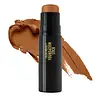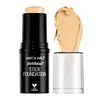What's inside
What's inside
 Key Ingredients
Key Ingredients

 Benefits
Benefits

 Concerns
Concerns

 Ingredients Side-by-side
Ingredients Side-by-side

Isononyl Isononanoate
EmollientCetearyl Ethylhexanoate
EmollientPolyethylene
AbrasiveCetyl Ethylhexanoate
EmollientDipentaerythrityl Hexa C5-9 Acid Esters
Skin ConditioningNeopentyl Glycol Diheptanoate
EmollientTrioctyldodecyl Citrate
EmollientMethyl Methacrylate Crosspolymer
Methoxy PEG-17/Methoxy PEG-11/Hdi Isocyanurate Trimer Crosspolymer
Silica
AbrasiveSynthetic Candelilla Wax
EmollientHydrogenated Coco-Glycerides
EmollientBis-Behenyl/Isostearyl/Phytosteryl Dimer Dilinoleyl Dimer Dilinoleate
EmollientMicrocrystalline Wax
Emulsion StabilisingSynthetic Wax
AbrasiveHydrogenated Microcrystalline Wax
Emulsion StabilisingOleic/Linoleic/Linolenic Polyglycerides
EmollientPhytosteryl Macadamiate
Skin ConditioningPhenoxyethanol
PreservativeAstrocaryum Murumuru Seed Butter
EmollientSorbic Acid
PreservativeTocopherol
AntioxidantGlycine Soja Oil
EmollientIron Oxides
CI 77891
Cosmetic ColorantIsononyl Isononanoate, Cetearyl Ethylhexanoate, Polyethylene, Cetyl Ethylhexanoate, Dipentaerythrityl Hexa C5-9 Acid Esters, Neopentyl Glycol Diheptanoate, Trioctyldodecyl Citrate, Methyl Methacrylate Crosspolymer, Methoxy PEG-17/Methoxy PEG-11/Hdi Isocyanurate Trimer Crosspolymer, Silica, Synthetic Candelilla Wax, Hydrogenated Coco-Glycerides, Bis-Behenyl/Isostearyl/Phytosteryl Dimer Dilinoleyl Dimer Dilinoleate, Microcrystalline Wax, Synthetic Wax, Hydrogenated Microcrystalline Wax, Oleic/Linoleic/Linolenic Polyglycerides, Phytosteryl Macadamiate, Phenoxyethanol, Astrocaryum Murumuru Seed Butter, Sorbic Acid, Tocopherol, Glycine Soja Oil, Iron Oxides, CI 77891
Isononyl Isononanoate
EmollientDipentaerythrityl Hexa C5-9 Acid Esters
Skin ConditioningDipentaerythrityl Hexahydroxystearate/Hexastearate/Hexarosinate
Skin ConditioningSilica
AbrasiveEthylhexyl Palmitate
EmollientPolyglyceryl-10 Diisostearate
EmulsifyingPolyglyceryl-2 Triisostearate
EmulsifyingPolyethylene
AbrasiveCaprylic/Capric Triglyceride
MaskingSynthetic Wax
AbrasiveHydrogenated Microcrystalline Wax
Emulsion StabilisingCopernicia Cerifera Wax
Microcrystalline Wax
Emulsion StabilisingDimethicone
EmollientEuphorbia Cerifera Wax
Hydrogenated Styrene/Methylstyrene/Indene Copolymer
Triethoxycaprylylsilane
Astrocaryum Murumuru Seed Butter
EmollientPhytosteryl Macadamiate
Skin ConditioningSorbic Acid
PreservativePhenoxyethanol
PreservativeHelianthus Annuus Seed Oil
EmollientPassiflora Edulis Seed Oil
EmollientTocopherol
AntioxidantSchinziophyton Rautanenii Kernel Oil
EmollientMacadamia Integrifolia Seed Oil
Skin ConditioningArgania Spinosa Kernel Oil
EmollientCocos Nucifera Oil
MaskingGlycine Soja Oil
EmollientPentaerythrityl Tetra-Di-T-Butyl Hydroxyhydrocinnamate
AntioxidantIron Oxides
CI 77492
Cosmetic ColorantCI 77499
Cosmetic ColorantIsononyl Isononanoate, Dipentaerythrityl Hexa C5-9 Acid Esters, Dipentaerythrityl Hexahydroxystearate/Hexastearate/Hexarosinate, Silica, Ethylhexyl Palmitate, Polyglyceryl-10 Diisostearate, Polyglyceryl-2 Triisostearate, Polyethylene, Caprylic/Capric Triglyceride, Synthetic Wax, Hydrogenated Microcrystalline Wax, Copernicia Cerifera Wax, Microcrystalline Wax, Dimethicone, Euphorbia Cerifera Wax, Hydrogenated Styrene/Methylstyrene/Indene Copolymer, Triethoxycaprylylsilane, Astrocaryum Murumuru Seed Butter, Phytosteryl Macadamiate, Sorbic Acid, Phenoxyethanol, Helianthus Annuus Seed Oil, Passiflora Edulis Seed Oil, Tocopherol, Schinziophyton Rautanenii Kernel Oil, Macadamia Integrifolia Seed Oil, Argania Spinosa Kernel Oil, Cocos Nucifera Oil, Glycine Soja Oil, Pentaerythrityl Tetra-Di-T-Butyl Hydroxyhydrocinnamate, Iron Oxides, CI 77492, CI 77499
Ingredients Explained
These ingredients are found in both products.
Ingredients higher up in an ingredient list are typically present in a larger amount.
Astrocaryum Murumuru Seed Butter isn't fungal acne safe.
We don't have a description for Dipentaerythrityl Hexa C5-9 Acid Esters yet.
Glycine Soja Oil comes from the soybean. Glycine Soja is native to eastern Asia.
Soybean oil is an emollient. It is rich in antioxidants and fatty acids including palmitic, stearic, oleic, and linoleic acids.
As an emollient, the fatty acids in soybean oil helps keep your skin soft and hydrated. It does so by creating a film on top that traps moisture in.
Soybean oil is also rich in vitamin E, a potent antioxidant. Vitamin E is also anti-inflammatory and provides a soothing effect.
Studies show soy may help fade hyperpigmentation from UVB. It does so by disrupting the melanin process from UVB induced skin inflammation.
This ingredient may not be malassezia folliculitis, or fungal-acne, safe.
Soybeans are rich in proteins and are part of the legume family. Foods made with soybeans include tofu, soymilk, edamame, miso, and soy sauce.
Learn more about Glycine Soja OilHydrogenated Microcrystalline Wax isn't fungal acne safe.
Isononyl Isononanoate is a synthetic skin-conditioner and texture enhancer. It is created from nonanoic acid, a fatty acid found in cocoa and lavender oil.
As an emollient, Isononyl Isononanoate helps keep your skin soft and smooth. This is because emollients create a barrier on the skin to trap moisture in.
Isononyl Isononanoate helps give products a velvet feel and improves spreadability.
Learn more about Isononyl IsononanoateMicrocrystalline Wax is created by de-oiling petroleum. It is highly refined and purified before being added to cosmetics.
Microcrystalline Wax is used to enhance the texture and create even consistency. It helps stabilize a product by preventing ingredients from separating.
Phenoxyethanol is a preservative that has germicide, antimicrobial, and aromatic properties. Studies show that phenoxyethanol can prevent microbial growth. By itself, it has a scent that is similar to that of a rose.
It's often used in formulations along with Caprylyl Glycol to preserve the shelf life of products.
Phytosteryl Macadamiate comes from the fatty acids of Macadamia Seed Oil and an ester of phytosterol. Phytosterols are the plant-versions of cholesterol.
This ingredient helps provide hydration due to its high fatty acid content.
Polyethylene is a synthetic ingredient that helps the skin retain moisture. It is a polymer.
It is also typically used within product formulations to help bind solid ingredients together and thicken oil-based ingredients. When added to balms and emulsions, it helps increase the melting point temperature.
Silica, also known as silicon dioxide, is a naturally occurring mineral. It is used as a fine, spherical, and porous powder in cosmetics.
Though it has exfoliant properties, the function of silica varies depending on the product.
The unique structure of silica enhances the spreadability and adds smoothness, making it a great texture enhancer.
It is also used as an active carrier, emulsifier, and mattifier due to its ability to absorb excess oil.
In some products, tiny microneedles called spicules are made from silica or hydrolyzed sponge. When you rub them in, they lightly polish away dead skin layers and enhance the penetration of active ingredients.
Learn more about SilicaSorbic Acid is a preservative. It is the most commonly used food preservative in the world.
Sorbic Acid is a natural antibiotic and highly effective at preventing the growth of fungus. It is less effective against bacteria.
Potassium Sorbate, another commonly-used preservative, is the potassium salt of Sorbic Acid.
Sorbic Acid may worsen eczema. We recommend speaking with a professional if you have any concerns.
Potassium sorbate and sorbic acid can be found in baked goods, cheeses, dried meats, dried fruit, ice cream, pickles, wine, yogurt, and more.
Learn more about Sorbic AcidSynthetic Wax is created from fossil fuels such as natural gas. It is used to enhance texture, adjust pH, and as an occlusive.
It may also be used as an abrasive ingredient to exfoliate the skin.
Synthetic Wax may not be fungal acne safe.
Learn more about Synthetic WaxTocopherol (also known as Vitamin E) is a common antioxidant used to help protect the skin from free-radicals and strengthen the skin barrier. It's also fat soluble - this means our skin is great at absorbing it.
Vitamin E also helps keep your natural skin lipids healthy. Your lipid skin barrier naturally consists of lipids, ceramides, and fatty acids. Vitamin E offers extra protection for your skin’s lipid barrier, keeping your skin healthy and nourished.
Another benefit is a bit of UV protection. Vitamin E helps reduce the damage caused by UVB rays. (It should not replace your sunscreen). Combining it with Vitamin C can decrease sunburned cells and hyperpigmentation after UV exposure.
You might have noticed Vitamin E + C often paired together. This is because it is great at stabilizing Vitamin C. Using the two together helps increase the effectiveness of both ingredients.
There are often claims that Vitamin E can reduce/prevent scarring, but these claims haven't been confirmed by scientific research.
Learn more about TocopherolThis ingredient is a combination of red, black, and yellow iron oxide pigments. This combination of colors is usually found in foundation, because it results in a "skin" color.